By Michael Eisenberg and Shay Bar
Zinman Institute of Archaeology
Director of the Hippos of the Decapolis Excavations Project
University of Haifa
April 2012
Two brief seasons of excavations were conducted during 2011 in Tel Shikmona (Šiqmônah) on the shores of Haifa along the northern coast of Israel [1]. The project is funded by the Hecht Foundation within the framework of the Shikmona Park as well as the promenade and open archaeological garden under preparation there. This public project and the excavation areas around the Tel conducted by Dr. Michael Eisenberg, while the excavations in the Tel itself conducted by Dr. Shay Bar, are being carried out on behalf of the Zinman Institute of Archaeology, University of Haifa.
Excavations at Tel Shikmona had already been conducted by the late Joseph Elgavish for the Haifa Municipality during the 60s-70s of the previous century. His findings there were of the remains of a settlement that had existed from the late Bronze Age (about 15th century BCE) until the Umayyad period (7th century CE).
Renewed excavations of the Tel and its immediate environs were conducted in two main areas: Two sub-sections on the slopes of the Tel itself [2], and a church complex to the south of the Tel [3]. This time we chose to review the excavations conducted on the slopes of the mound.
On the eastern slope of the Tel, a cross-section was dug from its top to its lower declivities. In this area, remnants of villas belonging to well-to-do residents of the Byzantine period (4th to 5th century CE) were discovered built on the terraced slope. These houses were found to have mosaic floors and warehouses that had been destroyed during some violent devastation, but which left scores of vessels intact and in situ which included the remains of a wooden chest, a bronze candlestick, a Vandal sword (?), coins, decorative items, medals, and many metal and glass vessels that attest to the wealth of the residents [4] [5] [6] [7]. Beneath the remains of the Byzantine period, a structure from the Persian period (4th century BCE) was exposed. Among the finds were an oven, several weaving loom weights made of clay, and many storage jars that bear witness to the existence of a city of the Persian period.
To the south of the main excavation cross-section, four strata of the Iron Age (11th to 8th century BCE) were excavated. Sections of an impressive casemate wall were found as well as a large collection of items imported from Cyprus and the Lebanese coastal regions. A special find was the remains of purple-colored sediment on large jar fragments. This appears to be a rare case of purple dye (Tyrian purple) preservation, since hundreds of murex shells were discovered during the excavations. Most probably the economy of the settlement was based on the knowledge and expertise in producing this highly prized and expensive dye. Another interesting find is a personal seal engraved with ancient Hebrew or Phoenician lettering that has not yet been deciphered.
During the excavation, a building of the 9th century BCE – the Iron Age period – was exposed once more. In that period, the most common type of residential building was called the “four-room house” or “pillared house” – a structure characterized by a functional division into four rooms, three of which were positioned lengthwise and one was broad-roomed. In Shikmona, an almost perfectly preserved building of this kind was found that provides a rare opportunity to become familiar with the routines of daily life during the period of the Israelite kingdom in the north [8]. We hope that this unique building will be well conserved and be included in the open archaeological park planned for this site in cooperation with the Haifa Municipality.
During the conservation work and preparation of the site for visitors, the remains of a church were excavated some 100 m south of the Tel. Here we found a number of colorful mosaic floors dating from the end of the 4th century to the beginning of the 7th century CE [9].
Side by side with the continued development of the public park, the archaeological park will soon be opened to visits by the residents of Haifa, and we hope that within a few years the local population will be able to experience immediate contact with ancient remains that have until now been hidden from their eyes.
Tel Shikmona illustrations:
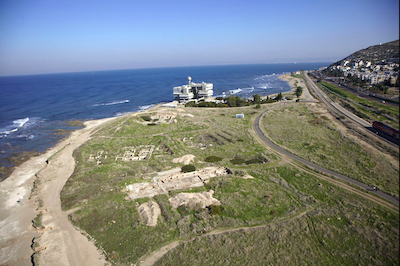
shores of Haifa, Israel. An
aerial photograph, looking
north (photo: M.
Eisenberg).
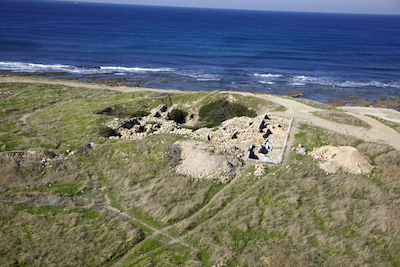
section and excavations at
the mound. An aerial
photograph, looking west
(photo: M. Eisenberg).
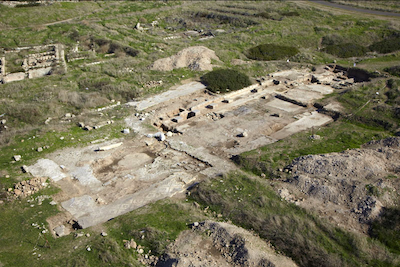
photograph, looking north (photo: M. Eisenberg).
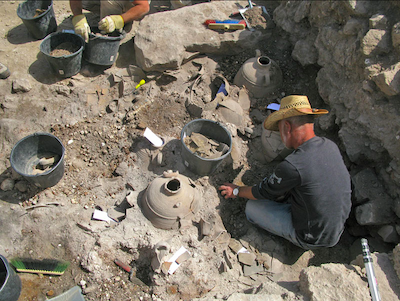
vessels in the Byzantine
house on the mound
(photo: S. Bar).
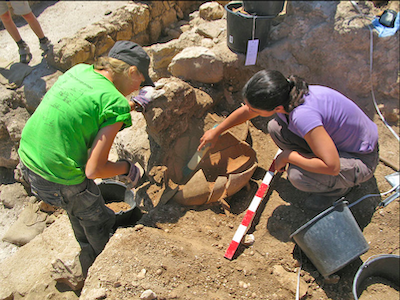
of the amphorae found at the
Byzantine house at the mound
(photo: S. Bar).
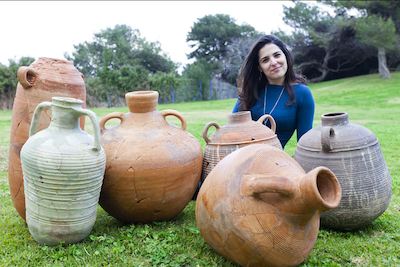
ceramic repertoire, following
conservation, found in the
ash layers of the Byzantine
house on the mound
(photo: M. Eisenberg).
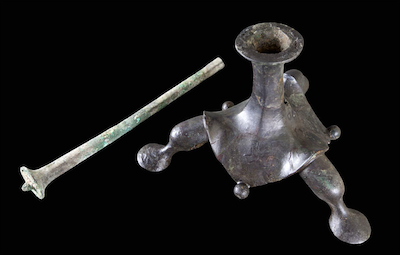
the Byzantine house after
conservation treatment
(conservation: A. Iermolin,
photo: M. Eisenberg).
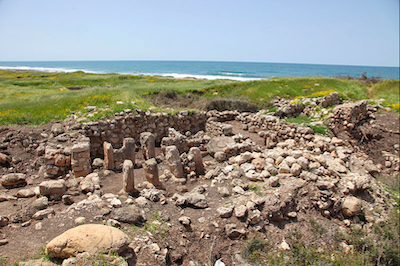
of the mound (photo: M. Eisenberg).
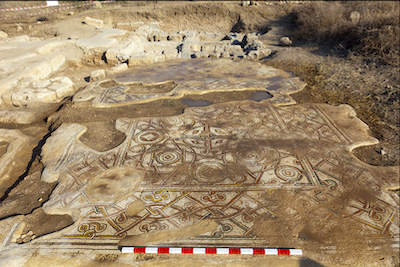
area of a Byzantine church south of the
Tel (photo: M. Eisenberg).
